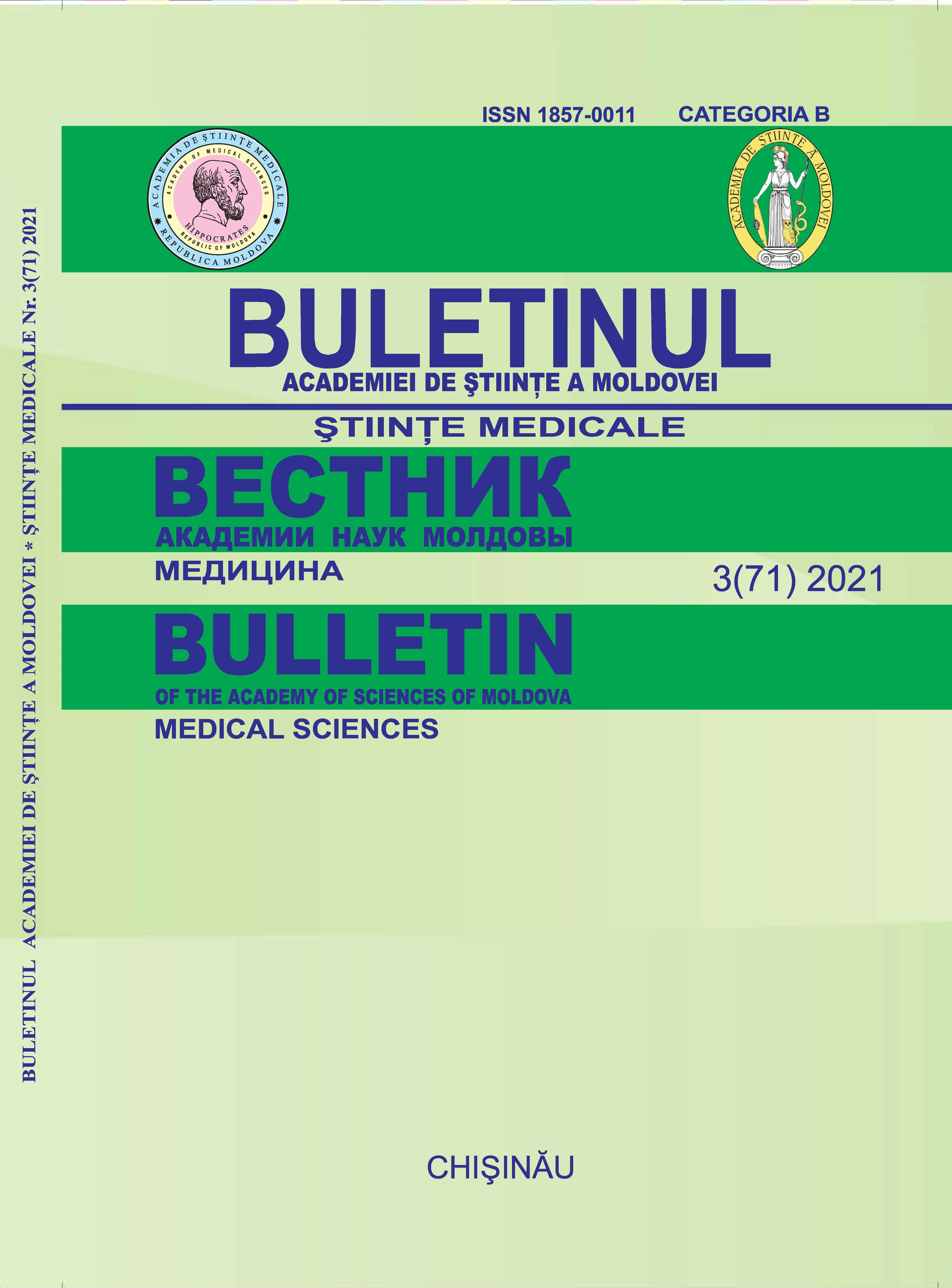FUNCTIONAL PITUITARY ADENOMA ASSOCIATED WITH NON-RUPTURED ANEURYSM OF THE MIDDLE CEREBRAL ARTERY. CASE STUDY
DOI:
https://doi.org/10.52692/1857-0011.2021.3-71.48Keywords:
adenoma, cerebral aneurysm, association, pituitaryAbstract
The association between cerebral sacral aneurysm and pituitary adenoma has not yet been well elucidated, withsome authors reporting an incidence of up to 7.4%. The cause is not yet fully known. 97% of these aneurysms belongto the anterior cerebral circulation. Description of a case study in which a functional selective expansive process anduninterrupted intracerebral aneurysm of the middle cerebral artery are determined. The 57-year-old patient is diagnosedwith pituitary adenoma with cavernous sinus invasion and Cushing’s syndrome. On investigation by MRI and AngioCT,an associated aneurysm of the right cerebral artery on the right, uninterrupted, is incidentally determined. The patientunderwent micro-neurosurgery to ablate the saddle formation and the concomitant clipping of the cerebral aneurysm by aclassical right approach. After the operation, a partial ablation of the intracavernous adenoma and a definitive clipping of the aneurysm were achieved. The patient is discharged from the institution after 5 days, without additional complicationswith subsequent adjuvant treatment. The association of these two pathologies is extremely rare. The literature describesthe solution of these two pathologies in a single intervention, without essential post-operative complications, as describedin the case presented.
References
Gokalp HZ, Avman N, Ozkal E, Gokben B. Brain tumour associated with intracranial arterial aneurysm. Acta Neurochir (Wien) 1980;53(3- 4):267-273.
Wakai S, Fukushima T, Furihata T, Sano K. Association of cerebral aneurysm with pituitary adenoma. Surg Neurol 1997;12(6):503-507.
Pant B, Arita K, Kurisu K, Tominaga A, Eguchi K, Uozumi T. Incidence of intracranial aneurysm associated with pituitary adenoma. Neurosurg Rev 1997;20(1):13-17.
Acqui M, Ferrante L, Fraioli B, Cosentino F, Fortuna A, Mastronardi L. Association between intracranial aneurysms and pituitary adenomas. Neurosurgery 1987;30(6):177-181.
Jaunsolo MA, Aguirre M, Bellido D, Castro S, Ruiz MP, Hawkins FG. Association of acromegaly and a cerebral arterial aneurysm disclosed by a subarachnoid hemorrhage. Neurosurgery 1986;32(3):266-268.
Revuelta R, Arriada-Mendicoa N, Ramírez-Alba J, Soto-Hernández JL. Simultaneous treatment of a pituitary adenoma and an internal carotid artery aneurysm through a supraorbital keyhole approach. Minim Invasive Neurosurg 2002;45(2):109-111.
Hermier M, Turjman F, Tournut P, et al. Intracranial aneurysm associated with pituitary adenoma shown by MR angiography: case report. Neuroradiology 1994;36(2):115-116.
Fujiwara S, Fujii K, Nishio S, Fukui M. Diagnosis and treatment of pituitary adenoma with adjacent carotid artery aneurysm. J Neurosurg 1991;35(1):41-46.
Weir B. Pituitary tumors and aneurysms: case report and review of the literature. Neurosurgery 1992;30(4):585- 591.
Adachi K, Kudo M, Chen MN, Nakasawa S, Wakabayashi I. Cerebral aneurysm associated with multiple endocrine neoplasia, type 1: case-report. Neurol Med Chi 1993;33(5):309-311.
Jakueowski J, B kendall: Coincidental aneurysm with tumors of pituitary origin. Journal of Neurology, Neurosurgery, and Psychiatry 41 (1978) 972-979
Du boulay GH: Some observations on the natural history of intracranial aneurysms. Br J Radiology 38 (1965) 721-57
Mangiardi jr, snalei~SEc, M. Lifshitz, R. PINTO: Coincidental pituitary adenoma and cerebral aneurysm with pathological findings. Surg Neuro119 (1983) 38-41
Downloads
Published
Issue
Section
License
Copyright (c) 2022 Bulletin of the Academy of Sciences of Moldova. Medical Sciences

This work is licensed under a Creative Commons Attribution 4.0 International License.



